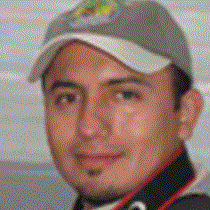The island of Floreana, also known as Charles or Santa Maria, was the first island officially inhabited by Ecuadorians in 1832, when Ecuador took possession of the islands. Before this, the islands were a favorite place for pirates and whalers, and in particular Florena, for it had a freshwater spring in the highlands, giant tortoises to eat, and good hidden spots. Numerous visitors tried to colonize the island, some more bizarre than others, and therefore the island is well known for its very interesting human history.
This morning we visited a site named Punta Cormorant where we landed before breakfast, at the green beach, named after the crystals of olivine (periods) found in the sand. Here, the trail took us inland, passing by the side of a brackish lagoon where we found flamingos feeding and filtering the rich water ponds full of invertebrates and crustaceans.
The vegetation surrounding the lagoon is typical for the lowlands: mangroves, succulent plants, and the predominant tree, the palo santo, as well as few unique and endemic plants such as the scalesia villosa and the lecocarpus pinnitafidus. Guests learned about arrival and colonization species as well as about how natural selections acts in isolated islands.
Soon after we were at a white coral sand beach, known as la Picona, one of the most important nesting sites for the East Pacific green sea turtles, which at this time of the year, are mating and laying eggs. Some fresh tracks were found, meaning that last night we had females nesting on the beach. From the total number of eggs been laid every year, perhaps, only one percent of the new hatchlings, reach adult size, while the rest are eaten by predators in land or in the water.
Later one, and right after breakfast, the captain repositioned the ship, this time near one of the offshore islets, where a remnant population of the endemic Floreana mockingbird is found. Only a few individuals, those who arrive to these islets were able to survive, while the entire population on the mail island was wiped out by the introduce species such as cats and rats.
Incredible efforts are been carried out by the National Park and Charles Darwin Scientists to eradicate the alien species and at the same time to protect and increase the threatened populations to healthier numbers.
Later in the afternoon we went to explore Post Office Bay, where a barrel is still used for an old mail swap tradition going back to whaling days.
Following in Charles Darwin’s footsteps, who visited Floreana, during his five-week visit to the Galápagos in September 1835, we spent the afternoon visiting the famous landmark and going through the mail to see if we our guest could carry on with a centuries-old tradition and hand deliver some mail picked up here!









